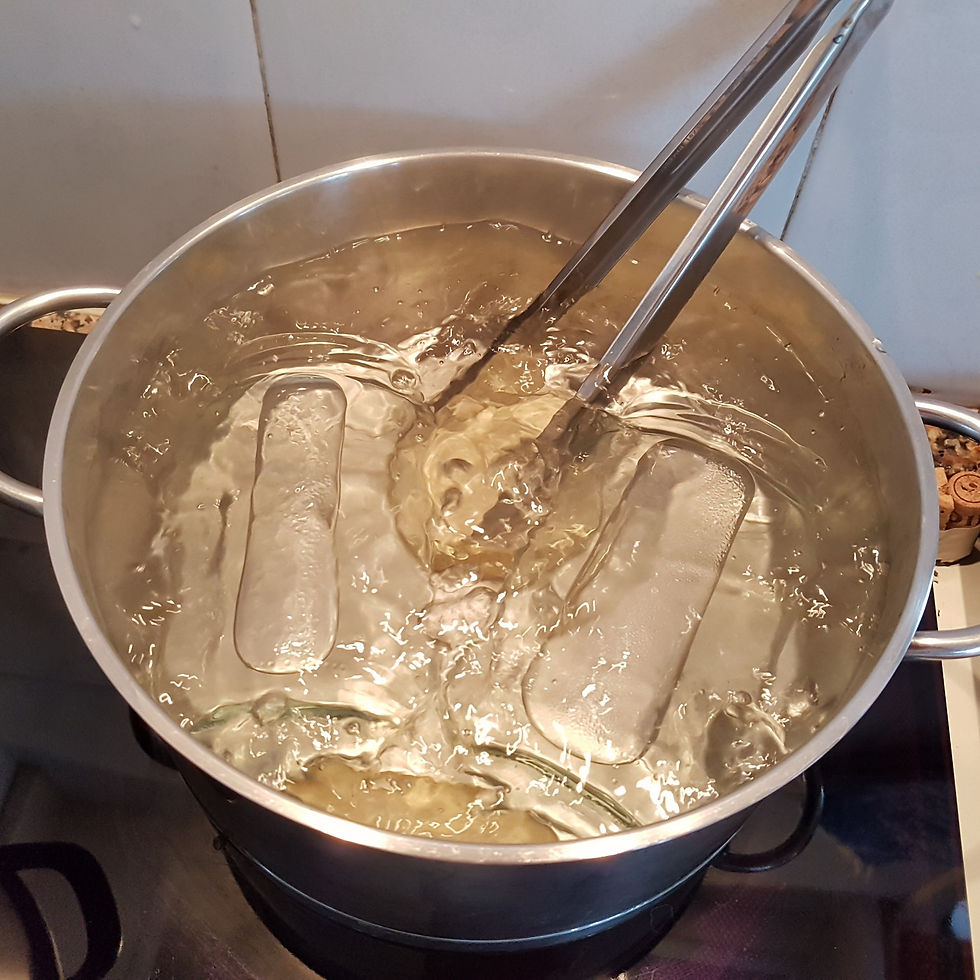Bitter Seville orange preserve - Kitromila
- Cyprus Cooking by Liz

- Jan 20, 2019
- 4 min read
Updated: Jun 28, 2020

These bitter Seville oranges originate from Asia and where brought to Europe by merchants, they are inedible because they are way to sour to eat and because of that they contain a high percentage of pectin, they are excellent for marmalade, here in Cyprus they are used to make preserve rather than marmalade. I used 28 oranges for the preserve and 4 to make some marmalade, always welcome in my household! The recipe for the preserve will follow as Mrs Amalia was an expert in making this sweet, actually she used to make also these oranges when they are still small and green, then they can also be prepared as preserved fruit, but slightly different than in this recipe. Then you must pick the fruit in September. For this recipe we pick the oranges from Christmas time until the middle of January. This preserve is also used for decorating the Sharlot and in the Christmas cake. It is quite a lot of work, but distributed over a few days doable and absolutely worth it. They can be stored, when stored well, up to 3 years. Excellent with a Cyprus coffee and a glass of cold water!

Ingredients:

20 to 30 bitter oranges ripe and firm
3 kg sugar
1.5 liter water
juice from 1 large lemon
1-2 sachets vanilla sugar
Method:

All the bitter oranges are grated with the fine side of the grater. Only the very top layer is grated, so they keep their orange color. I had 28 oranges and it took me about 2 1/2 hours, yes, it is quite some work, better would be to get some family members to participate in the grating. It seems there is a machine on the market that does the grating, but for once a year or even once in 2 years, by hand will do.

With a sharp knife a cross is slit into the grated orange.

Separate the quarters.

Take out the flesh.

With a sharp knife scrape out most of the white fibers in the peel, so only the peel remains with a thin layer of white fiber.

Roll up each peel and with a large needle and some white thread sew the rolled peel by passing the thread 2 times through the rolled orange peel to keep the peel rolled up whilst cooking.

With one piece of thread 8 to 10 peels can be kept together.

Place all rolled up peels in a large cooking pot and fill it up with cold water.

Place a plate on top to keep them covered with water whilst cooking. Boil them for about 20 minuted until they soften.
Drain them in a colander and wash them of with cold water.

Place the orange peels in a large glass or ceramic bowl with lid. Cover them with fresh cold water. Cover with the lid. Change the water every day for 4 days.

Drain the peels in a colander.

With a scissor cut the thread and careful remove the thread from each peel. Do not worry, the peels will stay rolled up.

In the meantime in a large cooking pot add the water and the sugar and bring to a boil, skim the scum that appears on the top.

Add all the peels to the clear syrup.

Boil the peels for 40 minutes, skim any scum that may appear. Boil on medium to high heat.

Add the lemon juice and the vanilla sugar to the syrup with the orange peels and boil for another 10 min. Boil on medium to high heat.

In the meantime sterilize the jars in boiling water for 10 minutes. Place the sterilized jars upside down on a clean thick cloth.

Fill the jars with orange peels, close them well with their lids and turn them upside down for 10 minutes. They will vacuum by themselves as soon as they are turned right side up. The lids will be sucked down with a small popping sound. When the sweet is vacuumed well they can be stored for up to 3 years. When opened the syrup should smell sweet and ''orangy'', when it smells sour the sweet is no longer edible.
It is important to mention, that once opened they can be stored in the fridge, but when the outside temperature is not to high they can also be kept in a kitchen cupboard. Even more important is to take always a clean fork or spoon for removing a peel from the jar.
The peels are served on special small dishes especially for serving these sweets, one sweet is placed on one small dish, see also the second photo at the top of this blog. Accompanied with a glass of cold water. Nowadays these sweets are 'old-fashioned', people eat ready cakes and pies from bakeries, these small dishes are not even available here on the island anymore, where in Greece they can be found in many different designs, the small dishes used in the photo on top and below are a present from a dear family member, they belonged to her mother. Many thanks for this gesture.

Καλή όρεξη - Enjoy!!





Comments